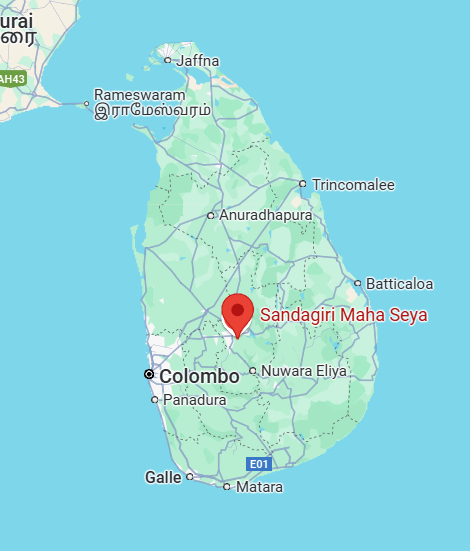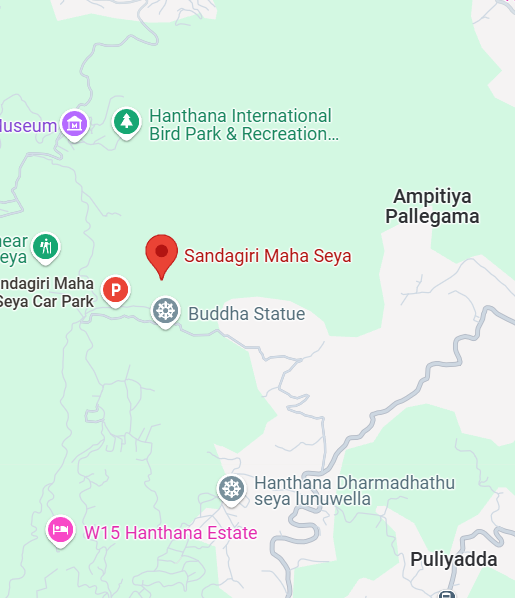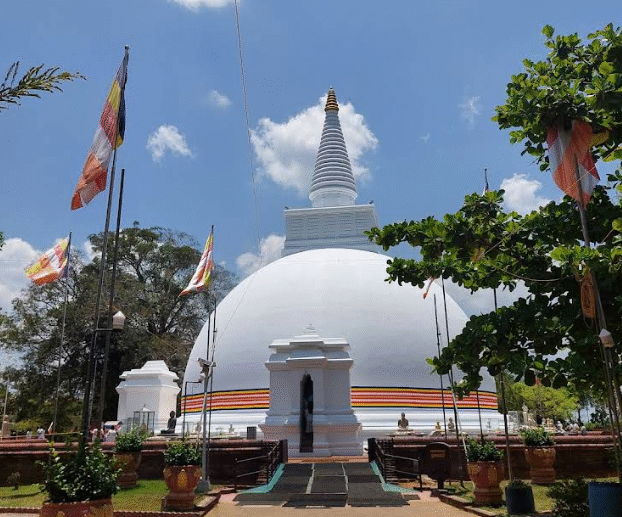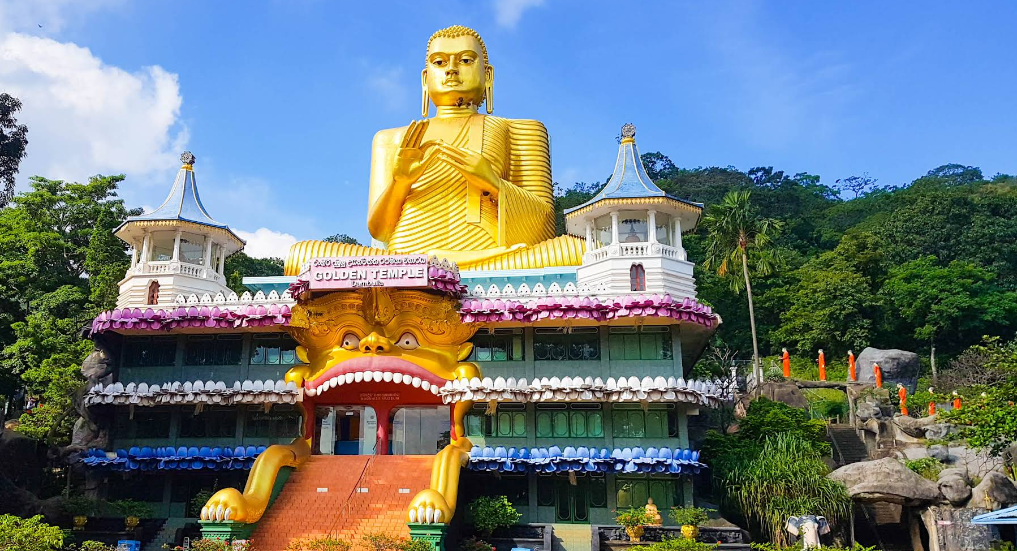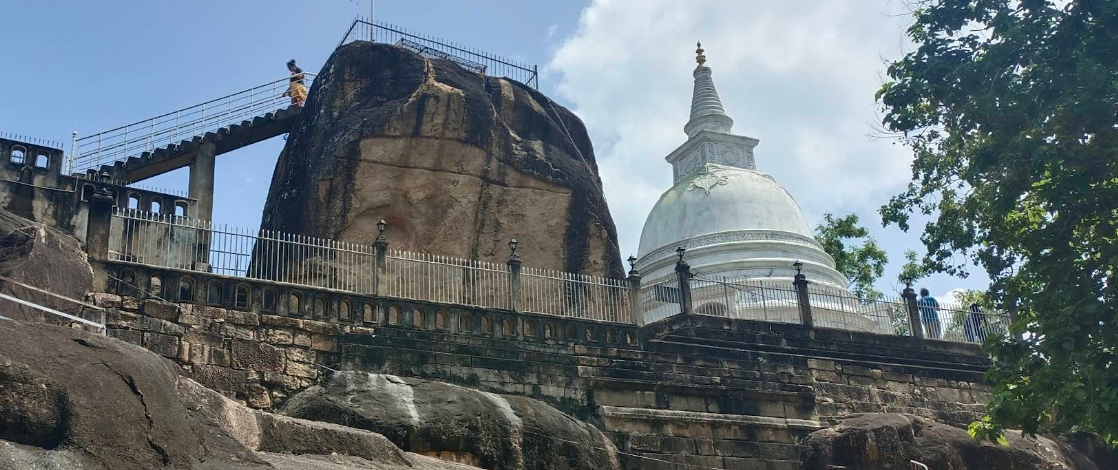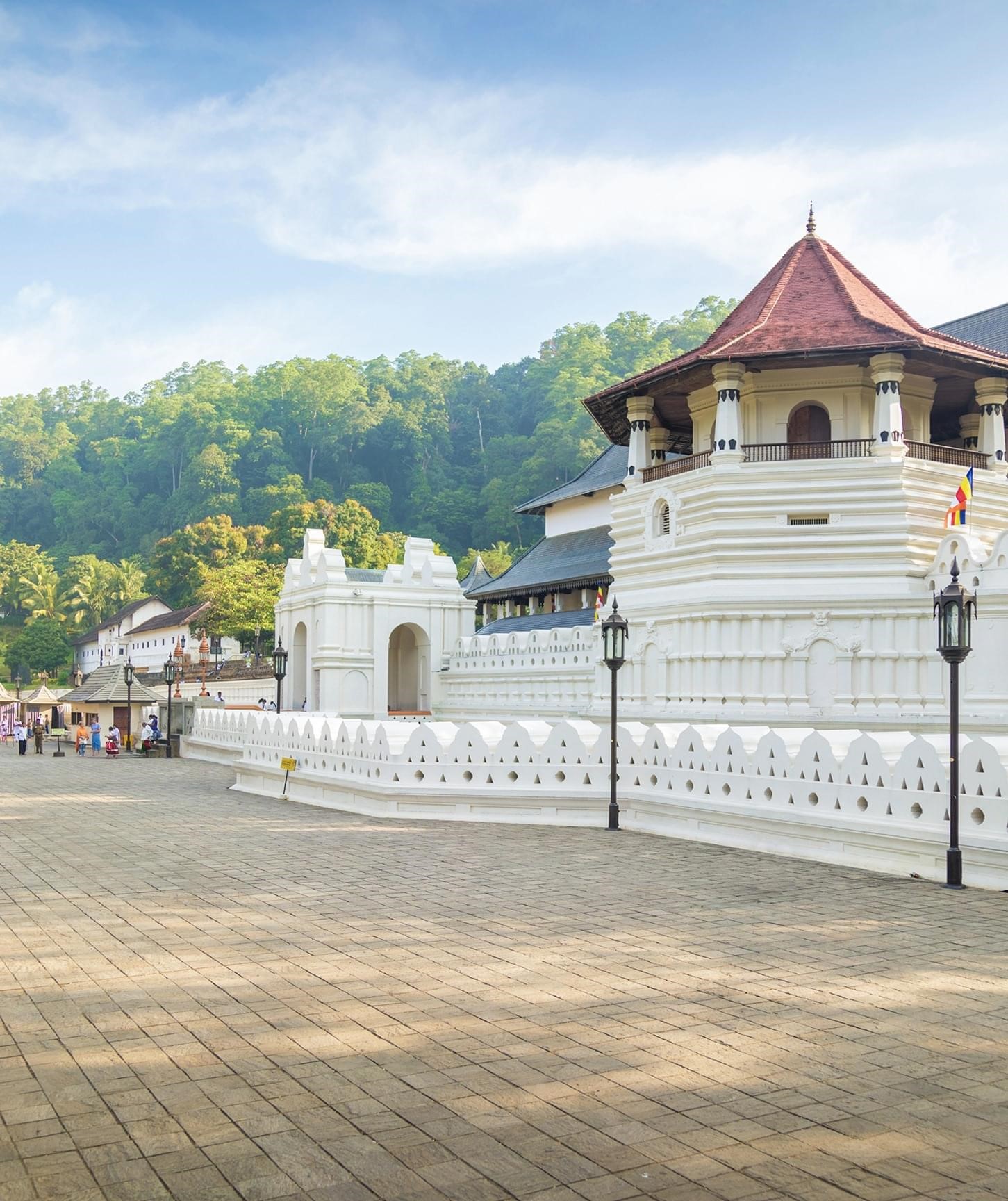Sandagiri Maha Seya: A Testament to Sri Lanka’s Ancient Buddhist Heritage
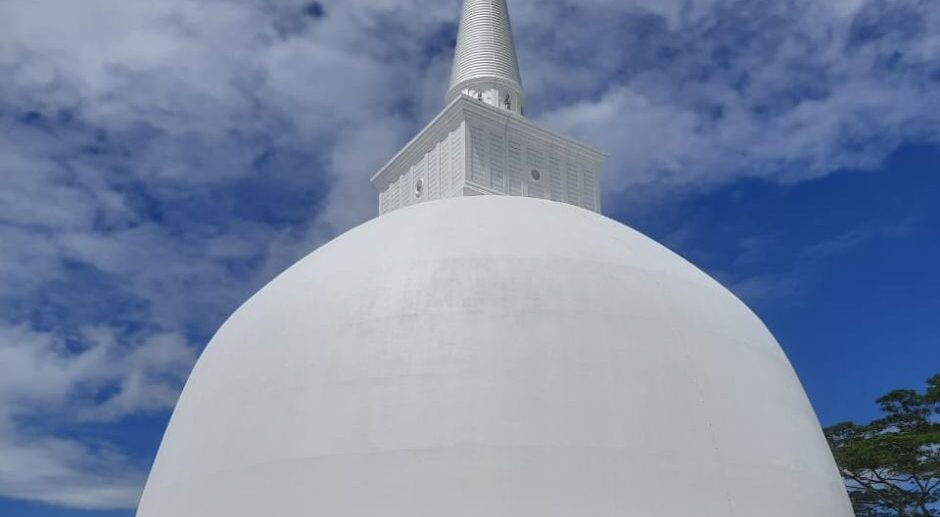
Sandagiri Maha Seya, the largest stupa in Kandy District, is a newly constructed Buddhist religious site nestled in the picturesque Hanthana mountain range, just a short distance from Kandy town. The access road to this impressive white dagoba begins near the highest point of the Hanthana road. Visitors can enjoy breathtaking panoramic views of mist-covered mountains and lush landscapes. Sandagiri Maha Seya is a new landmark of Kandy and of her backyard mountain, the Hanthana Range. The large white dagaba is situated close to the 850 m high pass of the Handana-Uduwela road from Kandy to Galaha From. The pass is in only 1.7 km /1 mile) distance from the Ceylon Tea Museum, another major tourist attraction of Kandy. The driving dustance from the center of Kandy uphill to the pass is 6 km (4 miles)
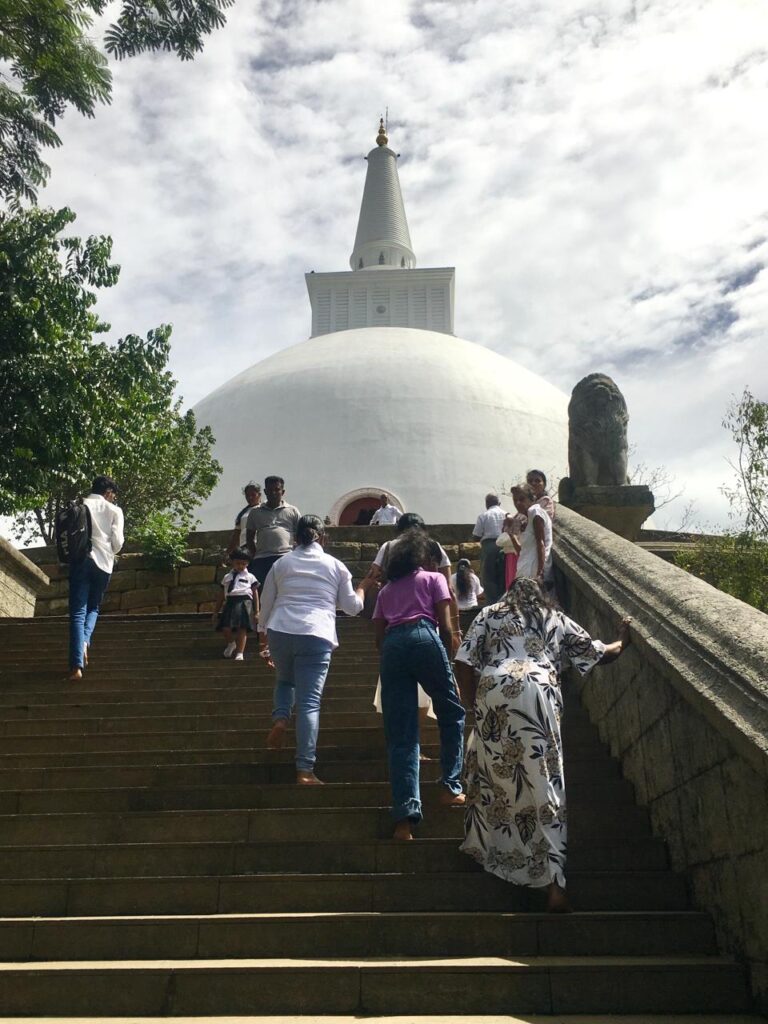
Very close to the 850 m high pass, a steep and winding side road branches off to the car park of the Sandagiri Maha Viharaya, which is the temple at the foot of the stairway to the big stupa. The terrace of the stupa, which is in an elevation of 930 m above sea level. The terrace offers a 180 degree panoramic view to Hanthana Range with the cliifs of Katusukonda und Uragala to the right and the valley of the Mahaweli River to the left.
The Sandagiri Maha Seya is one of Sri Lanka’s new giant dagaba constructions from our century, supported by public and private donations, for example collected by the Path Nirvana Foundation. The construction works commenced was started on 27 January 2017. The completion ceremony, erecting the pinnacle on the top the stupa dome, took place on 28 March 2021, whereas the consecration ceremony, depositing sacred objects in the stupa, was held on 10 September 2022.
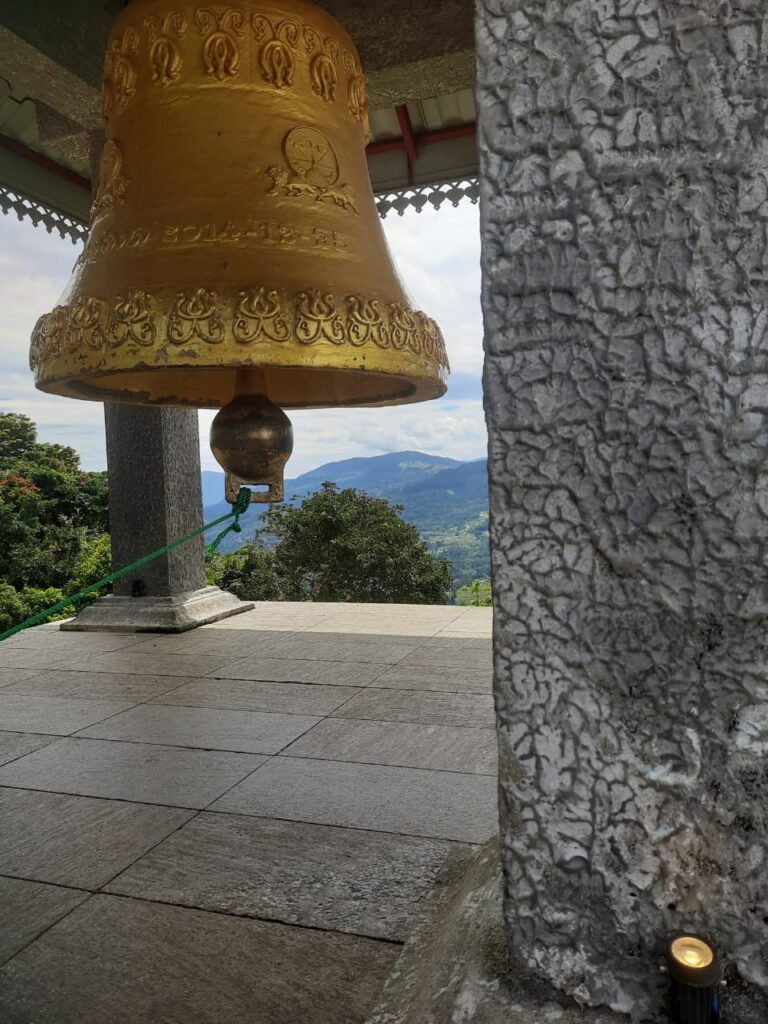
With a height and almost equal diameter of 33 m (more than 100 feet), the Sandagiri Maha Seya is the largest stupa in Kandy District. In Sri Lanka’s Central Province, only the record-breaking dome of the Kotmale Maha Seya in Nuwara Eliya District is bigger. Like most modern stupas – and in contrast to ancient stupas – the dome has a large inner hall which is accessible. It is constructed as cupola hall supported by only a single column in the very center. The column is designed as a Bo-Tree, the branches of which spread out over a large part of the ceiling. Actually, the tree can also be considered as a world tree, as it forms the central vertical line from the relic chamber to the pinnacle, which was known as Upagala in ancient stupa architecture, representing the axis mundi of the world system symbolised by the entire stupa.
The ambitious project of constructing the huge Sandagiri Maha Seya was initiated by Ven. Gangasiripura Dhammaloka Thera, who was a fierce supporter of President Mahinda Rajapaksa. Promoting the military victory over the separatist and terrorist guerilla army, the monk engaged in a 30 days walk of blessings on the government, starting and ending at the Tooth Temple in Kandy, and also authored a book about it, titled “Budun Wedi Maga”, which he presented to the president in person.
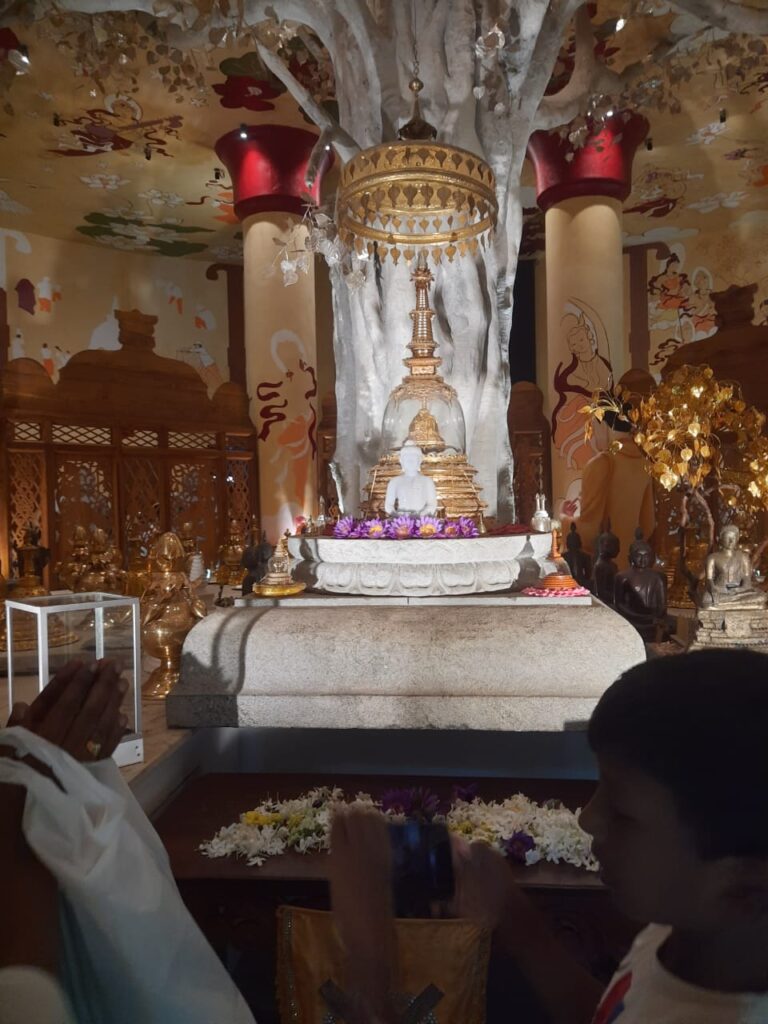
“Giri” means “hill” or “mountain” in several Indian languages. Sanda in Pali, the sacred language of Theravada Buddhism, means “grove” or “wood”. It’s derived from Sanskrit “sandra”, which means “thick” or “dense” and can refer to a thicket or dense forest as an abode of hermits. However, derived from Sanskrit “sanda”, the meaning is “heap” or “multitude”. Hence, “Sandagiri” can either be translated to “forested mountain” or to “heap on a hill”, both meanings would makes sense for a huge dome in the forests of the Hanthana Range.
Know before you go
Park vehicle at ample parking area under mountain to avoid road accidents on single-lane roadsChoose less crowded days to drive close to temple or stroll from parking area to enjoy tea stalls, roti stalls, ice cream parlor on campus.. Climb stairs in morning or evening for great vistas; exercise care as entrance road is narrow with limited parking area
Visit when not on public holidays to avoid crowds; appreciate washroom facilities but help maintain cleanliness by using garbage bins provided
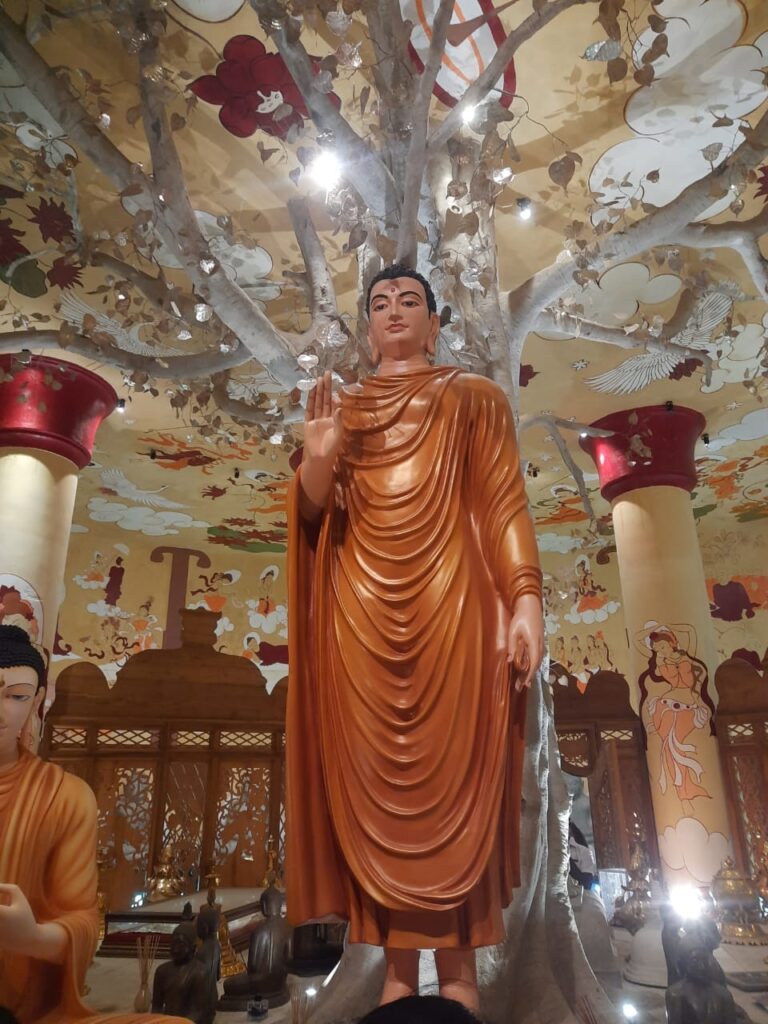
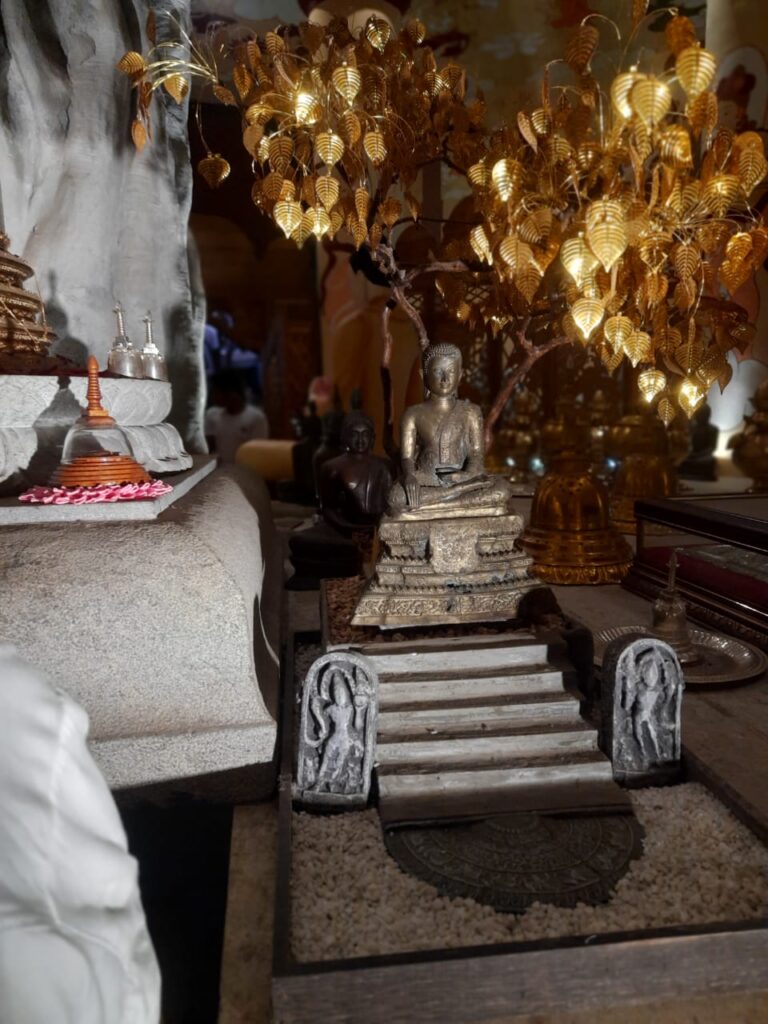
Reviews
offering a serene environment for religious activities and cultural events. The modern interpretation of ancient Buddhist architectural principles in its design, led by Ven. Gangasiripura Dhammaloka Thera, reflects both spiritual significance and national pride. Despite being under construction, the inside of the dagaba is highly recommended for its beauty and view.
Route Overview
From Kandy City Center:
- By Car or Taxi:
- Distance: Approximately 6 km uphill via the Handana-Uduwela Road.
- Route: Drive towards the Ceylon Tea Museum; the access road to the stupa branches off near the highest point of the Hanthana road.
- Note: The road is narrow and winding; it’s advisable to park at the base and walk the final distance to avoid traffic congestion
By Public Transport:
- Bus: Take a bus from Kandy to Hanthana.
- Walk: From the bus stop, walk towards the Ceylon Tea Museum and follow the signs to the stupa.
Visitor Information
- Opening Hours: Open 24 hours daily.
- Entry Fee: Free; donations are appreciated.
- Facilities: Basic amenities are available; it’s advisable to carry water and snacks.
- Dress Code: Modest attire is required; shoulders and knees should be covered.
